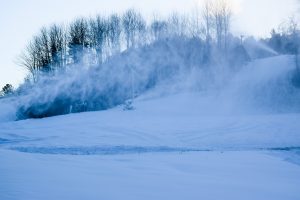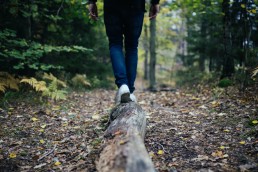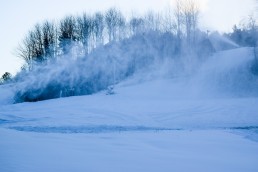Take a Hike!
Now that the warm weather has arrived, we want to do all the things outside! Here are just 3 of the ways that hitting the trails will help with solitude, adventure or a just breath of fresh air:
Home advantage: Often we don’t spend time appreciating the beauty of our own region, so go exploring in your neighbourhood to find hidden gems and new favourite places.
Great outdoors: It’s good for you! Hiking raises the heart rate, improves balance, builds muscle, can improve bone density, helps relieve stress and more. Trade your screen time for a little green time this summer!
New tricks: trying something new boosts confidence and adds a new skill to your toolbox. Want to mix it up? Go with a buddy or Hit up your local Facebook group to meet new friends, see new sights and cover new terrain.
Not sure where to head? Our region boasts many beautiful trails to try, from Island Lake to the Bruce Trail. Get out in the trails and take in the beauty or region has to offer!
Spring is for the bees!
With all the buzz about helping our bee population, spring is a great time to get started! Did you know that bees pollinate about 75% of the crops grown by humans? Here are a few ways you can help attract bees to your garden and keep the population of these crucial pollinators growing strong:
- Some bees build nests rather than living in hives, so leaving bare patches in your lawn will give them the room they need.
- Skip the wood chips! While they might look more appealing, they make access to the ground difficult for bees trying to build a nest.
- Boost bee feeding time with a variety of flowers that bloom throughout the year to give them nectar-rich options each season. Plant these types of flowers to help draw bees to your garden: Alyssum, Asters, Echinacea, Geranium, Poppies, Black-eyed Susans and Clovers.
- Avoid using pesticides in your garden. Rather than just attacking the ‘bad’ bugs, these chemicals target all bugs, eliminating necessary, beneficial visitors, like bees.
- Stay out of their way - the best way to protect these pollinators is just to let them bee!
Looking for more interesting content? Check out our blog for more articles at hockley.com.
Snowmaking: What You Need To Know

Snowmaking: What You Need To Know
It’s snowmaking season! What’s involved in our snowmaking process? Mark Hunter, our Ski Operations Manager has put together a list of things you need to know about snowmaking:
- Snowmaking starts once the temperature is consistently -3° or colder, but our optimal temp is
-10° ( 475 gallons of water/minute ) - Once the weather turns, our snowmaking team does not take a break on snowmaking until we have a 3’ base. Often we’re making snow for 24 hours at a time with a rotating team!
- Our snowmaking team consists of 6 staff, 9 fan guns, 40 water sticks, 2 air/water tower guns, and two grooming machines to spread the snow out perfectly.
- We use 15 million gallons of water and add a product called SnowMax. (This is what we use in our snow guns to make the water molecule smaller so it freezes faster.)
- Once we’ve made the piles of snow, we spread them out all over the hills and add snow where needed with the snow guns. We can typically cover about 1 run per day, on average, though Easy Rider takes much longer because it’s twice as long.
We’re often asked how we determine the order of the hills, in terms of snowmaking and getting them open… According to Mark, we start with Easy Rider and Teddy Bear on both ends and then we start filling in the middle with Face, building the terrain park and finishing the rest of the runs one by one.
Looking for more information from our ski department? Visit our website here: https://hockley.com/ski-snowboarding/


